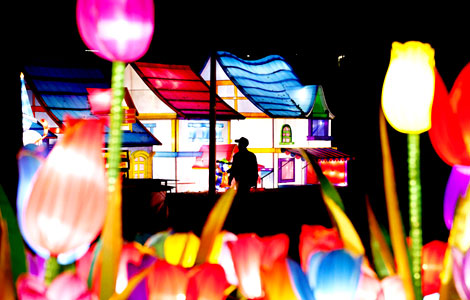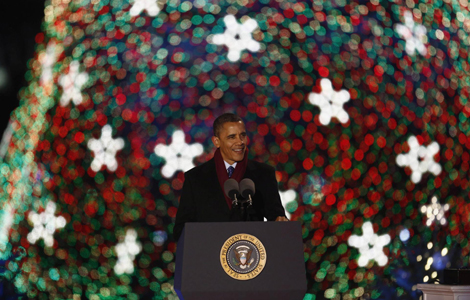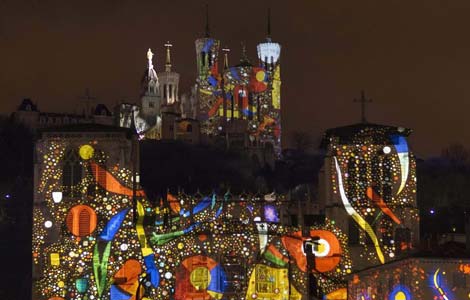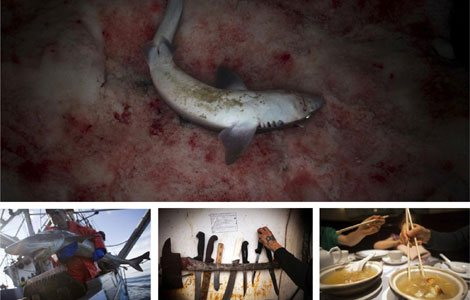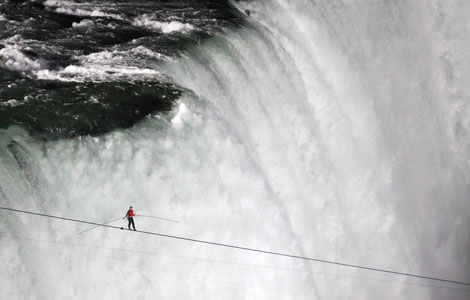
TOKYO - A strong quake centred off northeastern Japan shook buildings as far away as Tokyo on Friday and triggered a one-metre tsunami in an area devastated by last year's Fukushima disaster, but there were no immediate reports of deaths or serious damage.
The quake had a preliminary magnitude of 7.3, the U.S. Geological Survey said, adding that there was no risk of a widespread tsunami.
The March 2011 earthquake and following tsunami killed nearly 20,000 people and triggered the world's worst nuclear crisis in 25 years when the Fukushima-Daiichi nuclear plant was destroyed, leaking radiation into the sea and air.
Workers at the plant were ordered to move to higher ground after Friday's quake. Tokyo Electric Power Co, the operator of the Fukushima nuclear plant, reported no irregularities at its nuclear plants.
All but two of Japan's 50 nuclear reactors have been idled since the Fukushima disaster as the government reviews safety.
The quake measured a "lower 5" in Miyagi prefecture on Japan's scale of one to seven, meaning there might be some damage to roads and houses that are less quake resistant.
The scale measures the amount of shaking and in that sense gives a better idea of possible damage than the magnitude. The quake registered a 4 in Tokyo.
The one-metre tsunami hit at Ishinomaki, in Miyagi, at the centre of the devastation from the March 2011 disaster. All Miyagi trains halted operations and Sendai airport, which was flooded by the tsunami last year, closed its runway.
Five people in the prefecture were slightly injured.
"I was in the centre of the city the very moment the earthquake struck. I immediately jumped into the car and started running away towards the mountains. I'm still hiding inside the car," said Ishinomaki resident Chikako Iwai.
"...I have the radio on and they say the cars are still stuck in the traffic. I'm planning to stay here for the next couple of hours."
Narita airport outside Tokyo was back in action after a brief closure for safety checks. There were small tsunamis, measuring in the centimetres, elsewhere near the epicentre.
Last year's quake, which measured 9.0, triggered fuel-rod meltdowns at Fukushima, causing radiation leakage, contamination of food and water and mass evacuations. Much of the area is still deserted.
The government declared in December that the disaster was under control.
"Citizens are now escaping to designated evacuation centres and moving to places on higher ground," office worker Naoki Ara said in Soma, 30 km (18 miles) from the Fukushima-Daiichi plant.
Prime Minister Yoshihiko Noda cancelled campaigning in Tokyo ahead of a December 16 election and was on his way back to his office, but there was no immediate plan to hold a special cabinet meeting.
Public spending on quake-proofing buildings is a big election issue.
Japanese were posting photos of their TV screens with tsunami warnings on Facebook, asking each other whether they're safe, confirming their whereabouts.
"It shook for a long time here in Tokyo, are you guys all all right?" posted Eriko Hamada, enquiring about the safety of her friends.
Phone lines were overloaded and it was difficult to contact residents of Miyagi.
"Owing to the recent earthquake, phone lines are very busy, please try again later," the phone operator said.
The yen rose against the dollar and the euro on the news, triggering some safe-haven inflows into the Japanese currency.
